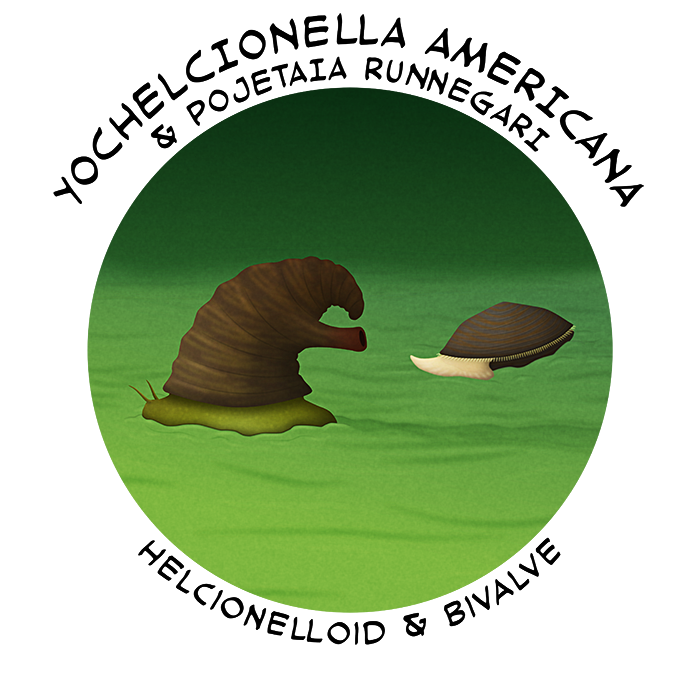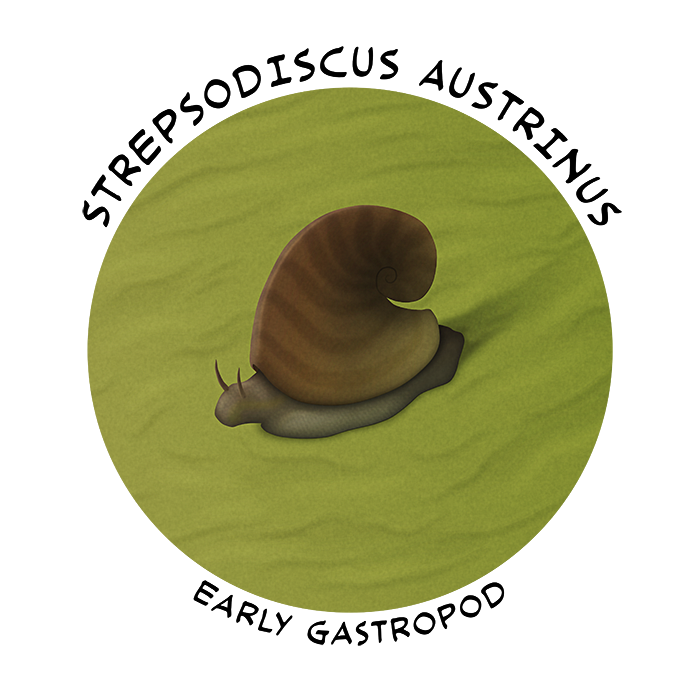The exact evolutionary relationships of the main groups of modern molluscs are rather debated, with several different proposed family trees. But one of the main possibilities is that there are two major lineages: the aculiferans and the conchiferans.
Modern conchiferans include slugs and snails, cephalopods, bivalves, tusk shells, and monoplacophorans – all groups that ancestrally have either a single-part shell or a two-part bivalved shell, with some lineages later becoming secondarily shell-less.
The ancestral conchiferans are thought to have been monoplacophoran-like molluscs, limpet-like with a cap-shaped shell, and likely diverged from a common ancestor with the aculiferans around the end of the Ediacaran. (But modern monoplacophorans probably aren’t “living fossil” descendants of early Cambrian conchiferans, and may instead be close relatives of cephalopods that have convergently become similar in appearance to their ancestors.)
Some of the earliest conchiferans were the helcionelloids, a lineage of superficially snail-like molluscs with coiled cone-shaped mineralized shells. They appeared in the fossil record at the start of the Cambrian (~540-530 million years ago) and lasted until the early Ordovician (~480 million years ago), and have been found all around the world as components of the “small shelly fauna“.
And while they’re usually tiny, only a couple of millimeters in size, they may actually represent juveniles or larvae – there’s evidence that at least some species grew up into much larger 2cm (0.8″) limpet-like adult forms.

Some helcionelloids like Yochelcionella americana had an odd tubular snorkel-like structure growing from their shells. This was probably part of their breathing system, serving as an “exhaust pipe” for the water passing over their gills, and may be an evolutionary link to the siphons or siphuncles of other conchiferans.
About 2mm long (0.08″), this particular species is known from the Forteau Formation in Newfoundland and Labrador, Canada (~514 million years ago) and also from similarly-aged deposits in Pennsylvania and Greenland. Other species in the same genus are found worldwide between about 530 and 505 million years ago.
In some parts of Yochelcionella americana‘s range it coexisted with another type of widespread early conchiferan – one of the first known bivalves, Pojetaia runnegari. Around 2mm long (0.08″), it would have lived either on or just under the surface of the seafloor.
It might have been related to a group of modern bivalves called protobranchs, or it may have been part of an early stem lineage with no close living relatives. It already had the basic bivalve body plan in place, with left and right valves, hinges, and shell-closing muscles, but doesn’t seem to have had a siphon. Unfortunately it doesn’t really give us much insight into the evolutionary origins of the group, and the appearance of the ancestral “proto-bivalves” is still unknown – but the microstructure of Pojetaia‘s shell may indicate a possible evolutionary link with the helcionelloids.

While the helcionelloids superficially resembled snails, it’s unclear if they were closely related to actual gastropods.
Fossils that might be true early gastropods first turn up in the mid-to-late Cambrian, with a group called bellerophonts. These molluscs had near-symmetrically coiled shells compared to the helical coiling of most gastropods, and they had quite a long run as a group, lasting all the way until the early Triassic (~249 million years ago).
Strepsodiscus austrinus is known from the Lampazar Formation in Argentina, dating to about 490-485 million years ago at the end of the Cambrian. About 3cm long (1.2″), its shell was very slightly coiled to the left, and it seems to have been a detritivore living on soft seafloor sediments.
